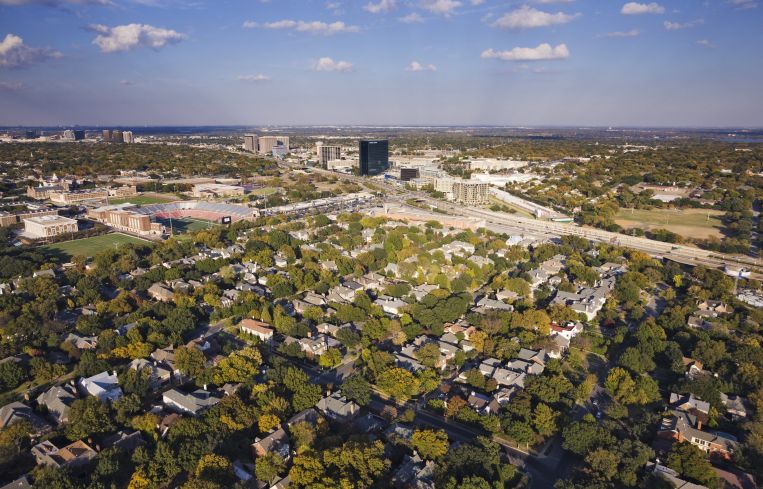Single-Family Rental Space Shows Strong Fundamentals in 2023: Report
Despite drops in rents and acquisitions, supply and demand remain exceedingly high
By Brian Pascus August 11, 2023 1:10 pm
reprints
Single-family rentals are expected to remain a long-term player in the commercial real estate asset class world — and millennial renters will be the engine that drives that growth.
That’s the conclusion from Yardi Matrix in the commercial real estate research and data firm’s August 2023 report on the national single-family rental (SFR) space. The report concluded that while high interest rates have tempered rent growth and acquisitions in the first half of 2023, demand for the product remains strong and is expected to thrive as millennials age out and begin to look for an inexpensive alternative to homeownership and apartment rentals.
“We see a looming millennial maturation—starting families, things like that— and I think they no longer want to rent the mid-sized, garden tower apartment, they want something that looks and feels like a home,” explained Doug Ressler, manager of business intelligence at Yardi Matrix, and author of the report. “As millennials mature, they will spark the demand for single-family rentals, and you’ll see a strong tide of that going forward in the next three-to-four years.”
The SFR space exploded during the COVID-19 pandemic. Supply rose astronomically in a formerly niche sector, as more American families began to work from home and looked for extra space outside of traditional apartments at a similar cost. This phenomenon combined with skyrocketing mortgage rates for houses to create a permanent wave of investment and institutional interest in the single-family rental sector.
“It’s a long-term player,” Ressler said. “We’ve got unprecedented supply coming on board in 2024 and 2025 in multifamily, but in 2025 and 2026 you’ll start to see a steep decline and that will be filled up with the single-family rental market.”
National SFR stock has increased 40 percent since 2019 and doubled since 2014, according to Yardi Matrix. The number of institutional SFR communities with 50 or more units reached 141,000 midway through 2023; by comparison that same number of SFR communities of 50 or more units reached less than 30,000 annually from 2010 to 2013, and barely topped more than 60,000 annually from 2016 to 2019.
Most new supply in 2023 has been concentrated in the Southwest, Southeast, and Western part of the country, with metropolitan areas in Orlando, Atlanta, and Jacksonville expected to increase their annual stock of SFR by more than 200 percent this year, according to Yardi Matrix.
“Given the occupier demand for the product and the strong returns produced by the sector to date, SFR has solidified its presence as a niche segment of the overall commercial real estate market,” the Yardi Matrix report concluded.
But even a growing market has pitfalls.
Rents have come back down to earth, after increasing by 20.2 percent in 2021 and 2022. Year-over-year rent growth in the asset class decelerated to merely 1.3 percent in the first half of 2023. However, national single-family rents are still roughly 40 percent higher than 2018 levels.
The metropolitan areas with the strongest year-over-year SFR rent growth are Nashville (21.3 percent), Baltimore (13.3 percent), Chicago (11.1 percent), and Pittsburgh (10.7 percent), according to Yardi Matrix.
Acquisitions from institutional investors have also dipped as rental prices dropped.
After transactions in the space reached $2.8 billion in 2021 and $2.7 billion in 2022, only $412 million worth of transactions have been completed in the first two quarters of 2023, according to Yardi Matrix. Ressler said that sales had been boosted in those previous years by easy financing, ample supply, and a wave of investment capital flowing into a niche market sector.
That equation has changed as the Federal Reserve increased interest rates to their highest levels in 22 years.
“The absence of inexpensive, or affordable financing is no more, and right now, the lack of investment capital being pumped into the sector is definitely dampening it,” Ressler said.
Be that as it may, while single-family rental sales have cooled, prices have remained high. The average sales price per unit of institutional single-family rental communities has increased by 8 percent in 2023 to $310,000, jumping from an average price of 286,000 in 2022, according to Yardi Matrix data.
Ressler described the growth in the single-family rental space as cyclical, rather than linear, and said that he expects major Real Estate Investment Trusts (REITs) to continue to make inroads into what was once a formerly ignored space in the next few years.
“What we see is that there will be transitioning in terms of the REITs, the major REITs will make this part of their strategy,” Ressler said. “Camden Property Trust and all those other folks will make it a significant part of their strategy going forward.”
Brian Pascus can be reached at bpascus@commercialobserver.com


